Disclosure: This article contains affiliate links. We may earn a commission from purchases at no extra cost to you, which helps our travel content.
G'day fellow adventure seekers! When I told my Aussie mates I was heading to Nebraska to watch birds, they nearly fell off their surfboards laughing. But here's the thing – the sandhill crane migration in Kearney isn't just any bird watching experience. It's 600,000+ prehistoric-looking creatures descending on the Platte River in a spectacular biological phenomenon that rivals any volcanic eruption I've sketched. As someone who typically chases lava flows and snowboards down mountains, this gentler adventure completely blew my mind – and I'm betting it'll do the same for you and your special someone.
The Geological Marvel Behind the Migration
As a geology nerd who's typically found sketching volcanic formations, I was fascinated to learn that the Platte River's unique characteristics are what make this migration possible. The river's shallow, braided channels formed over millennia, creating the perfect sandbar roosting habitat for cranes.
During my visit last March, I spent hours sitting along the riverbank sketching the landscape's subtle but crucial features. The Platte River Valley sits atop ancient sedimentary deposits, creating a wide, flat floodplain that gives the cranes both protection from predators and clear sightlines for potential threats.
What makes this experience so special is that you're witnessing something that's been happening for millions of years. These birds have been making this same journey since the Pleistocene epoch! Their migration patterns have outlasted mountain ranges and survived climate shifts. Standing there with my field journal (waterproof pages are a lifesaver when sketching near water), I couldn't help but feel humbled by the geological timescale playing out before my eyes.
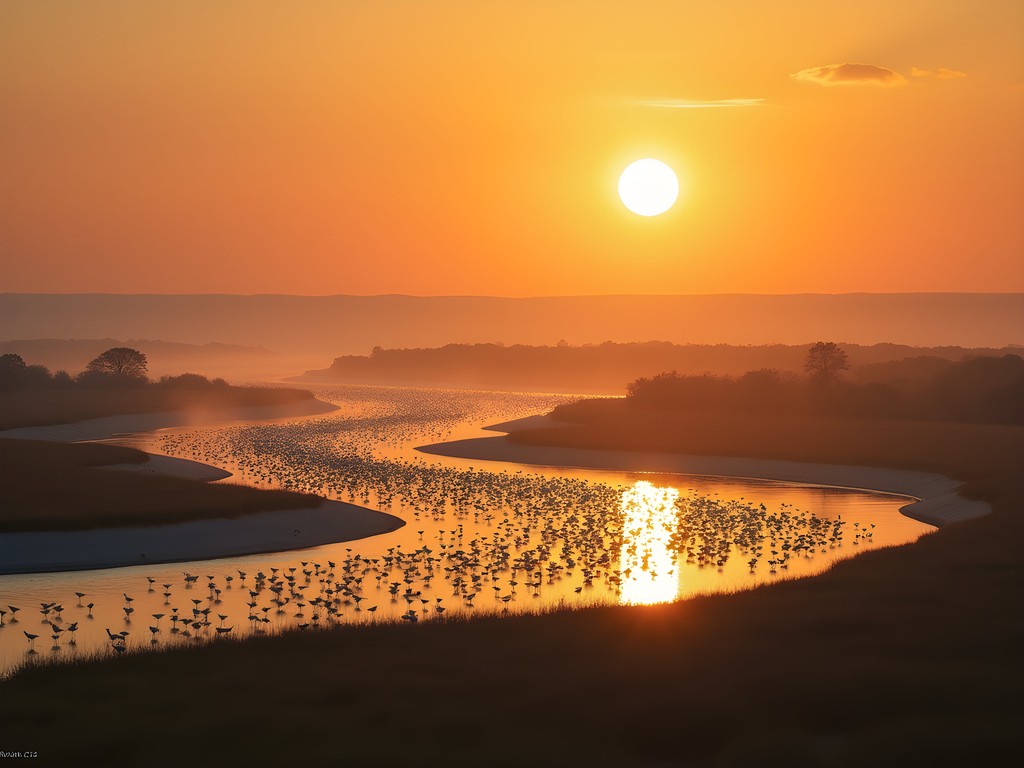
💡 Pro Tips
- The Platte River is only 3-5 inches deep in many places - perfect for cranes but terrible for boats, so plan on viewing from shore
- Visit the Crane Trust Nature & Visitor Center to learn about the river's unique geological formation
- The sandy substrate of the river makes for stunning sunrise reflections - bring a polarizing filter if photographing
Best Viewing Locations (From Someone Who's Tested Them All)
After three full days of crane-watching, I can confidently say not all viewing spots are created equal. Here's my breakdown of the best locations:
Rowe Sanctuary is the crown jewel of crane viewing. Their guided tours take you to riverside blinds before dawn, putting you literally meters from thousands of waking cranes. The sound of their collective calls at sunrise is something I'll never forget. Book these tours months in advance – I'm not exaggerating when I say they sell out faster than Coachella tickets.
Fort Kearny State Recreation Area offers a more accessible viewing experience from their bridge. It's perfect for couples who want the spectacle without the 4 AM wake-up call. I spent two evenings here watching the cranes return to roost at sunset, and it was magical every time.
Crane Trust Nature & Visitor Center provides excellent viewing platforms and educational displays. Their VIP tours are worth every penny for serious wildlife enthusiasts. When temperatures dropped unexpectedly during my visit, I was grateful for my hand warmers – essential for those chilly pre-dawn viewing sessions when you're standing still for hours.
For a more intimate experience, I discovered several public pull-offs along Elm Island Road. Just remember to stay in your vehicle as it acts as a natural blind that won't spook the birds.

💡 Pro Tips
- Book Rowe Sanctuary blind tours 2-3 months in advance
- Visit multiple viewing sites rather than just one – each offers a different perspective
- Bring a vehicle with decent clearance as some roads to viewing areas can be muddy in spring
Capturing the Magic: Photography Tips from an Illustrator
While I'm primarily an illustrator, I couldn't resist photographing these magnificent birds. The challenge? Crane photography requires specialized techniques and gear.
First, let's talk timing. The golden hour just after sunrise and before sunset offers the most magical lighting. I found myself waking at 4:30 AM to reach the blinds before the cranes began stirring at dawn – brutal for a night owl like me, but absolutely worth it.
Stability is crucial when shooting in low light conditions. After my first morning of disappointing blurry shots, I invested in a window mount that attaches to your car window – a game-changer for roadside viewing spots. For serious stability in the blinds, nothing beats a bean bag camera rest that conforms to any surface.
The most spectacular shots happen during mass takeoffs when thousands of cranes simultaneously launch into the morning sky. These moments are unpredictable but usually occur within 30 minutes of sunrise. I learned to watch for subtle cues – increased calling, neck stretching, and hopping – that signal an imminent takeoff.
Don't forget to capture the intimate moments too: courtship dances, feeding behaviors, and social interactions. These birds have personality for days! I filled an entire sketchbook with their distinctive movements that photographs alone couldn't capture.
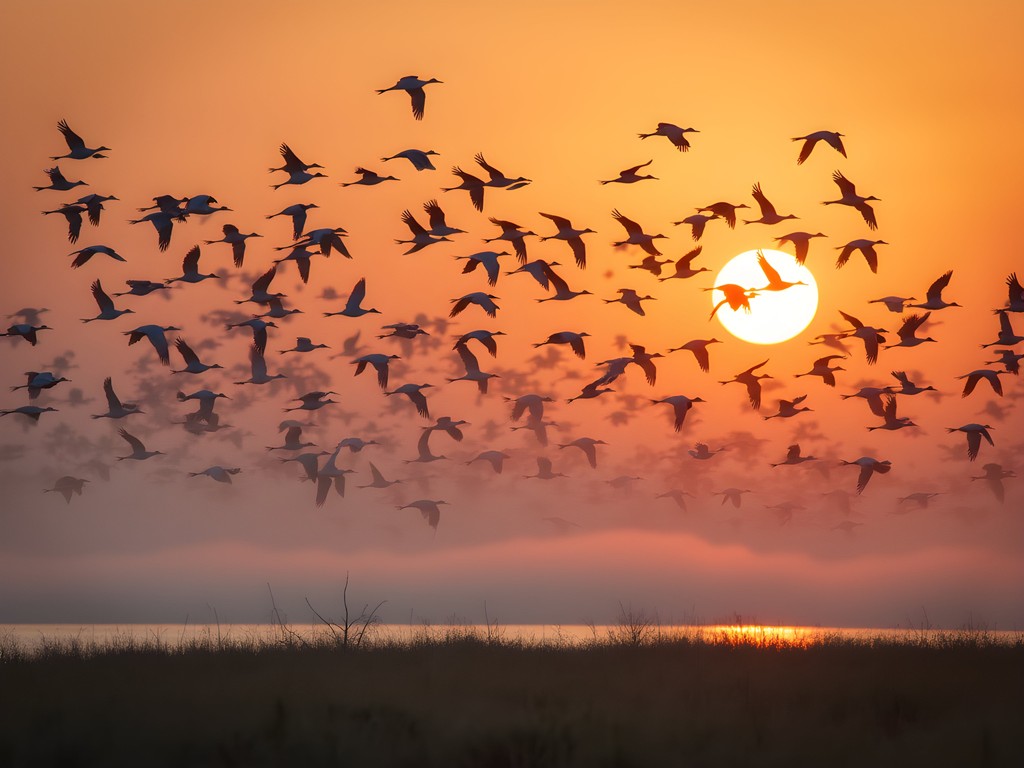
💡 Pro Tips
- Use a long lens (400mm+) for close-up crane shots
- Set your camera to burst mode to capture the perfect takeoff moment
- Bring extra batteries – cold morning temperatures drain them quickly
Beyond the Birds: Making It a Proper Weekend Adventure
While the cranes are undeniably the stars of the show, Kearney offers plenty of other activities to round out your weekend. After spending mornings with the birds, my afternoons were filled with unexpected Nebraska adventures.
The Archway Monument spans Interstate 80 and offers a fascinating journey through America's westward expansion. As someone who grew up on the other side of the Pacific, I found the pioneer history absolutely riveting. The museum's scale models of geological formations were particularly impressive (yes, I'm that geology nerd who gets excited about miniature landscapes).
Cottonmill Park provided a perfect afternoon escape with easy hiking trails where we spotted deer, wild turkeys, and other local wildlife. After sitting still for hours in crane blinds, stretching my legs here was a welcome change.
For evening entertainment, downtown Kearney surprised me with its charm. Thunderhead Brewing Company became my regular spot after crane watching. Their Nebraska Blonde Ale paired perfectly with stories of the day's sightings. The local craft beer scene is legitimately impressive!
Accommodation-wise, I stayed at the Fairfield Inn which was perfectly located between viewing sites. After freezing my bum off before dawn, returning to a hot shower was pure luxury. I also appreciated having a travel steamer to refresh my layers each night – when you're packing for both pre-dawn cold and afternoon warmth, having versatile clothing is essential.

💡 Pro Tips
- Schedule afternoon activities that get you moving after stationary morning crane viewing
- Book accommodations on the east side of Kearney for quicker access to prime viewing spots
- Local restaurants get packed during crane season – make dinner reservations in advance
Planning Your Crane Migration Weekend
If you're inspired to witness this spectacular migration yourself (and you absolutely should be!), here's my practical guide to making it happen:
Timing is everything. The peak migration typically occurs from early March to early April, with the absolute sweet spot usually falling around March 15-25. I visited March 18-20 last year and hit the jackpot with estimated counts of over 500,000 cranes in the area.
Book accommodations far in advance. This small Nebraska town fills up completely during crane season. I reserved my hotel room six months ahead and was glad I did. If you're a last-minute planner like my surfing mates back home, look for options in nearby Grand Island or Hastings.
Dress properly. The weather in Nebraska during March is wildly unpredictable. During my three-day visit, temperatures ranged from -5°C to 18°C (23°F to 65°F). Layering is your best strategy. I lived in my merino base layers topped with fleece and a windproof outer layer for mornings, shedding down to a single layer by afternoon.
Pack the right gear. Beyond warm clothing, bring good waterproof hiking boots as viewing areas can be muddy. A good thermos for hot drinks is essential for those pre-dawn viewing sessions – nothing beats watching cranes while sipping hot coffee as the sun rises.
Finally, bring patience and an open mind. Wildlife viewing isn't like visiting a theme park with scheduled performances. Some mornings might be foggy, some evenings the cranes might choose a different roosting spot. But I promise the moment when thousands of prehistoric birds fill the sky above you will more than make up for any minor disappointments.
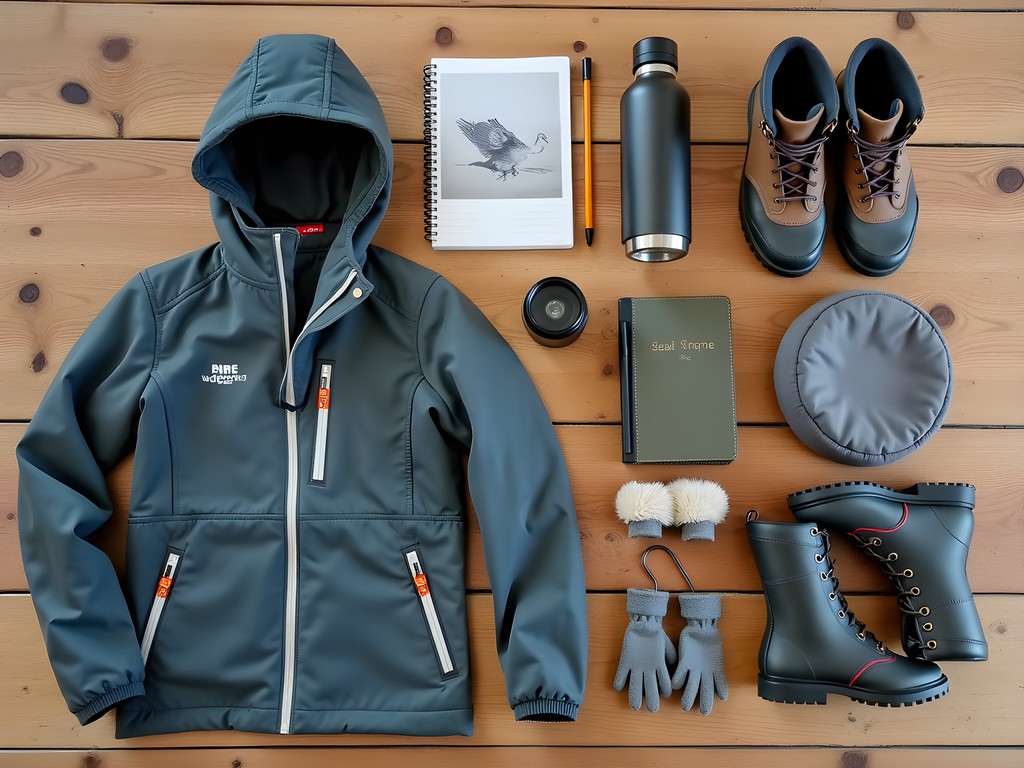
💡 Pro Tips
- Download the Crane Trust's migration app for daily crane count updates
- Pack a headlamp with a red light setting for pre-dawn walks to viewing blinds
- Bring a small cushion to sit on in blinds – those wooden benches get uncomfortable after an hour!
Final Thoughts
When I first added the sandhill crane migration to my adventure list, it was honestly a geological curiosity – I wanted to see how the Platte River's unique formation created this biological phenomenon. What I didn't expect was how emotionally moving the experience would be. Standing in pre-dawn darkness as thousands of ancient birds awaken, their calls echoing across the river, creates a connection to something much bigger than ourselves.
For couples seeking a meaningful weekend getaway, Kearney offers something rare in our hyper-connected world – a chance to witness one of nature's most spectacular and unchanged rituals. You'll leave with shared memories of breathtaking moments that no Instagram filter could ever enhance.
While it may not have the adrenaline rush of my usual volcano expeditions or snowboarding trips, this gentler adventure delivered something equally valuable – perspective. These birds have been making this same journey for millions of years, and with proper conservation, they'll continue long after we're gone. If that's not worth a weekend in Nebraska, I don't know what is.
See you on the river at sunrise! Just look for the Aussie frantically sketching crane anatomy while trying not to spill her coffee.
✨ Key Takeaways
- Book viewing blinds and accommodations several months in advance
- Mid-March typically offers peak crane numbers but any time in the migration window (early March to early April) is worthwhile
- Prepare for variable weather with proper layers and waterproof footwear
- Visit multiple viewing locations for different perspectives on the migration
📋 Practical Information
Best Time to Visit
Early March to early April, with peak typically around March 15-25
Budget Estimate
$500-700 per couple for a weekend (accommodations, tours, food, transportation)
Recommended Duration
3-4 days minimum
Difficulty Level
Easy

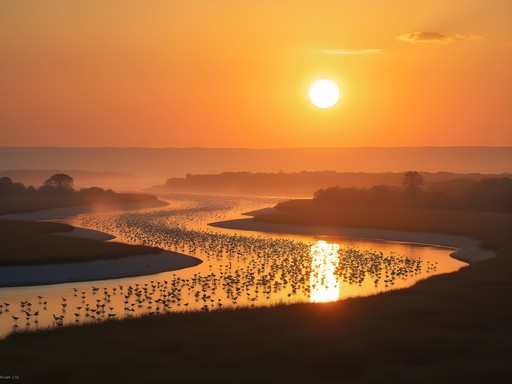






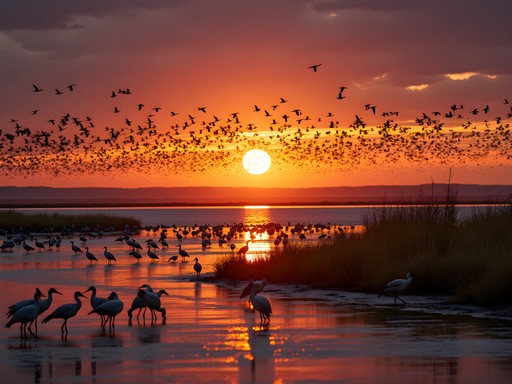






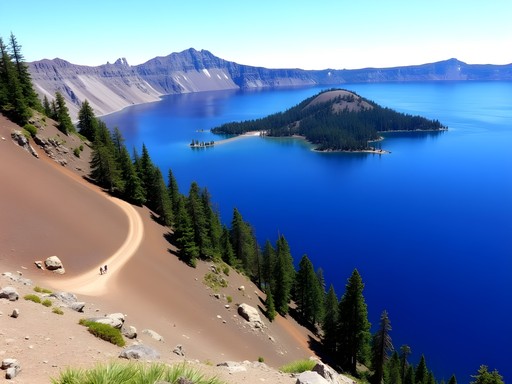
Comments
travelingteacher
Planning our school field trip here for next spring! This guide is so helpful.
Casey Andersson
Make sure to contact Crane Trust too - they have amazing educational programs specifically for school groups!
bird_watcher_101
Pro tip: bring a good pair of fingerless gloves if you're photographing in March/April. You need finger dexterity for camera controls but full gloves get too bulky. The blinds are cold at dawn!
prairie_photographer
Just got back from Kearney last week and WOW. Rachel's tip about visiting the Fort Kearny bridge at sunset was spot on. We saw thousands of cranes coming in to roost on the river. One thing to add - the weather can change quickly in Nebraska spring, so layers are essential! We had a 30-degree temperature swing in one day. Also found this great local coffee shop called Chapman Swifts that makes perfect pre-dawn coffee runs before crane viewing. Thanks for this guide - it really enhanced our trip!
coffeeace
Chapman Swifts is amazing! Did you try their crane-shaped cookies?
sunsetwanderer
Just got back from Kearney last spring and have a tip to add: if you can't get into the popular viewing blinds, try the Fort Kearny State Recreation Area. It's less crowded and we saw thousands of cranes from there. Also, the Kearney Visitor Center has free maps showing lesser-known viewing spots along country roads. We rented a car and found some amazing spots where we were the only humans for miles! The cranes were close enough for decent photos even with my basic camera.
blueninja
What camera settings did you use for those low-light crane shots?
Rachel Snyder
Hi blueninja! For the dawn shots, I used a high ISO (around 3200), wide aperture (f/4), and shot in RAW to recover details in post. My telephoto lens was essential - you really need that reach for the birds!
blueninja
Thanks! Gotta upgrade my gear before I go.
nebraska_native
As a local, I'd add that February can sometimes be just as good as March for viewing with fewer crowds. Weather's more unpredictable though! Also check out Thunderhead Brewing after your crane watching - great local spot.
smartway
Good to know about February! How's the weather typically?
nebraska_native
Can be anywhere from 20s to 50s (F) and sometimes snow. Definitely pack layers and waterproof boots!
coffeeace
Just added this to my bucket list! Those sunrise photos are INCREDIBLE!
Casey Andersson
Rachel, you've absolutely nailed the magic of the crane migration! I was there last March and it's genuinely one of North America's most underrated wildlife experiences. The dawn viewing at Rowe Sanctuary left me speechless - thousands of cranes calling out as the sun rose over the Platte River. Pure magic! For anyone planning to go, book your blind tours MONTHS in advance. I nearly missed out because I waited until January. Also worth mentioning that the small museums in Kearney have fascinating exhibits on the geological history of the river that really enhanced my understanding of why the cranes choose this specific location. Looking forward to your next adventure!
blueninja
How crowded was it when you went? Thinking of taking my kids next spring.
Casey Andersson
Weekends were definitely busy, but midweek wasn't bad at all! If you're bringing kids, I'd recommend the family programs at Audubon's Rowe Sanctuary - they're brilliant at engaging children with the migration story.
coolchamp
Love your photography tips section! I'm an amateur photographer planning to visit. What time of day did you find best for shooting? And did you need special permission for any of your shooting locations?
Rachel Snyder
The golden hour right after sunrise and before sunset is magical! Most of my shots were from official viewing blinds at Rowe Sanctuary and Crane Trust - you need reservations but no special photography permits. Just be prepared to arrive 1-2 hours before sunrise if you want the morning flight!
Douglas Bradley
Fascinating analysis of the geological aspects of the migration, Rachel. Many wildlife guides miss this crucial context. I'd add that the Platte River's braided channel system is a textbook example of how geography shapes ecology. When I visited last spring, I spent time at the local historical museum which had excellent exhibits on how the river has changed over centuries and how that's impacted crane patterns. The migration is not just a natural phenomenon but a cultural touchstone for Nebraska - the way local communities have built traditions around it reminds me of seasonal celebrations I've documented across Asia. Excellent guide!
Venture X
Premium card with 2X miles, $300 travel credit, Priority Pass